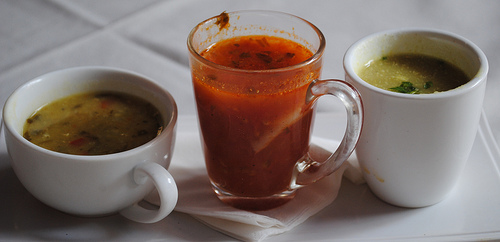
LITTLE PIM BLOG
Have a Multicultural Thanksgiving with Little Pim
When most people in America think of Thanksgiving, they think of eating traditional foods like turkey, cranberry, and pumpkin pie with family and friends. Uniquely American traditions like football and Black Friday shopping may also come to mind. But Thanksgiving looks very different in other countries, each of which have their own way of celebrating the bounty of the fall harvest with loved ones. You can teach your child about other cultures and build on their foreign language learning by introducing them to some international Thanksgiving traditions.
Germany: Germany's version of Thanksgiving is national holiday called "Erntedanktag," which translates to "Harvest-Thanksgiving-Day." Harvest Festivals (Erntefests) are held in churches, markets and dance halls throughout the country, each celebrating foods for which the region is famous.
China: China's Mid-Autumn Moon Festival, like the American Thanksgiving, is a time for family and loved ones to celebrate the end of the harvest season with a giant feast. Legend says that the moon is at its brightest and roundest on this day, which is said to inspire rekindled friendship or romance.
To represent the full moon, the Chinese eat a delicious flaky pastry called a mooncake, which is stuffed with either sweet or savory filling. If you're up for a tasty challenge, check out this step-by-step guide to making your own.
Israel: Jewish families celebrate a 3000-year old harvest festival called Sukkot. A hut of branches called a Sukkot is built, and Jewish families then eat their meals beneath the Sukkot under the night sky for eight days. These hearty, seasonal fall soups from Israeli Kitchen are the perfect way to celebrate the end of the autumn harvest.
Korea: Chuseok is a major harvest festival and 3-day holiday in Korea celebrated on the 15th day of the 8th month of the lunar calendar. During this holiday, Koreans return to their hometowns to perform traditional rituals in the morning to remember their ancestors. Family members also visit their decreased loved ones, offering food, drink and crops. A popular food for the holdiday called songpyeon, a crescent-shaped rice cake, is prepared using healthy ingredients like sesame seeds, cinnamon, and pine nuts.
Check out the video below for a tutorial on preparing your own Songpyeon.
Tradition is great, but don't be afraid to mix in a few international foods and activities this holiday. As the Portuguese say, "Feliz (dia de) acção de graça" (Happy Thanksgiving)!
6 Reasons Your Child Should Learn Korean
This week we launched our 12th language for kids: Korean! And we couldn't be more excited. With so many languages to choose from, you may be wondering why your child should learn Korean. Here are a few reasons why Korean may be the right choice for your little one.
1. The Korean language is growing in popularity.
Korean is the sixteenth most widely spoken language in the world, spoken by more than 78 million people, according to Boston University.
As South Korea has become a bigger player in the world economy thanks to its technological innovation and popular culture, Korean language learning has been on the rise, particularly among younger people. Young adults are recognizing the growing opportunities in Korea and adopting the language to give themselves a leg up over the competition.
2. Korea has become a popular vacation spot. International tourists are increasingly realizing that Korea is a great country to visit for vacation. From checking out the dining and landmarks in Seoul to hiking in many of the beautiful mountains, Korea has become a major destination for world travelers.
And because the exchange rates are more favorable than in European countries, families on a budget can make the most of their trip.
3. The alphabet is easy to learn.
The Korean alphabet, Hangeul, is a phonetic alphabet with 24 letters and is very easy to read and write.
According to The Mezzofanti Guild, unlike Chinese and Japanese, it is not character-based. It is written from left to right and it has a unique way of organizing its letters into syllables where consonants and vowels are neatly arranged in blocks.
4. Korean phonetics are easy for English speakers.
Korean phonetics come easily to English speakers. Unlike Arabic and Hebrew, there are no guttural sounds.
Additionally, there are no tones like many other East Asian languages. In general, Korean is usually pronounced exactly the way it’s written--which is more than can be said for English, which contains many words that sound nothing like they appear.
5. Many Korean words are made up smaller, single-syllable words.
Many compound Korean words (especially ones that are derived from Chinese) are made up of single syllable words and you can usually take a rough guess at its meaning if you can recognize them. And if your child already knows Mandarin Chinese, it'll be even easier to start learning these words in Korean.
6. Learning Korean can be fun and easy.
Our new Korean program for kids makes it fun and easy for kids to learn. Built around fun, kid-friendly themes for ages 6 months to 6 years with language videos narrated by native speakers, kids can learn this increasingly popular language while being entertained at the same time.
Learning Korean can be a great way to give your child a head start and prepare him or her for the global economy. Check out our new Korean program or any of our 11 other languages.





